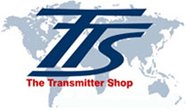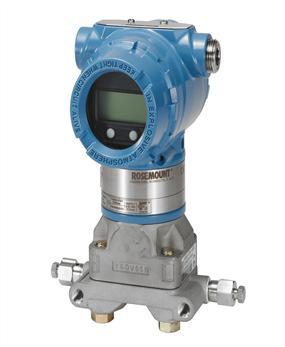BLOG
Difference in Conventional Transmitters and Smart Transmitters
Brian Craig
March 27, 2020
A General Introduction to conventional and smart transmitters
In order to compare conventional transmitters and smart transmitters, it is essential to study them individually. Let’s define both components individually.
Conventional Transmitters:
A conventional transmitter is a set of electronic elements that are used for transmitting the signal in the form of electromagnetic waves. In these transmitters, the operator can only deal with process variable signals, since a 4-20 mA range of transmitter regulates a limited loop current.
Smart Transmitters:
Smart transmitters work on the function of microprocessors for signal transmission. It works on the HART protocol due to which atmospheric readings are compensated during digital communication. Unlike a conventional transmitter, it can take zero span reading and also offers frequency shift keying (FSK).

Key differences between conventional transmitters and smart transmitters
It is certain that the smart transmitters ace the conventional transmitters in a significant manner, as they are taking the industrial place over conventional ones. The key factors that differentiate smart transmitters from conventional transmitters are detailed as follows:
Digital Communication:
The smart transmitters work on the Highway Address Remote Transducer (HART) protocol. HART protocol is a digital communication protocol that allows smart transmitters to superimpose the analog signals. Whereas, the conventional transmitters work on basic loop current generated electromagnetism principle that does not allow digital reading. Smart transmitters can also communicate via Foundation Fieldbus, Fieldbus, and Profibus.
Accuracy:
The zero span adjustment is not a convenient option in conventional transmitters due to its analog nature. Therefore, the readings on conventional transmitters deflect by 2-3% of the fixed reading value. In smart transducers, self-instrumental loop identification is performed in signal processing, therefore, zero value is added in the reading. This increases the accuracy of smart transmitters.
Rangeability:
The rangeability of the conventional transmitter is 5:1 where the smart transmitter offers over 100:1 rangeability, this makes smart transmitters highly accurate without any calibration.
Remote Access:
Internet-enabled integration in the smart transmitters allow remote installation and access. This makes them suited for the petroleum industry and other challenging industries where regular conventional transmitters fail.
Local Operator Interface (LOI):
Unlike conventional transmitters, the smart transmitters have a feature of local operator interface (LOI) that allows changing the device configurations. This feature is helpful when the smart transmitters are set in the calibration devices. This Local Operator Interface (LOI) is a screen on the transmitter which allows the operator to commission the device depending on the application. This interface is secured from dust and debris.
Now that the difference between conventional and smart transmitters has been discussed here in detail, you shall consider buying them from trusted suppliers. The Transmitter Shop is the prominent transmitter supplier in Texas. They have been supplying smart transmitters from Rosemount and Honeywell to their clients in industries like oil and gas, food and beverages, petroleum refining, and chemical industries for over 3 decades.
Related Posts
Pressure Monitoring in Pump Systems: A Comprehensive Guide
Common Challenges in Air Flow Measurement and How to Overcome Them
Monitoring and Controlling Energy Production in Power Plants
Understanding the Impact of Pressure Fluctuations on Drying Performance
Understanding Pressure Ranges and Units for Fluid System Monitoring
The Benefits and Challenges of HVAC System Balancing
An Ultimate Selection Guide for Flow Transmitters
Procedure to Calculate Accuracy of Pressure Transmitter Discussed
Pressure Transmitters vs. Pressure Transducers: Learn the Differential Characteristics
Multivariable Transmitter: What Is It and How Does It Work?
How Do You Test for 4 to 20mA Signal in a Pressure Transmitter?
Temperature Transmitter: How to Select The Efficient One for Your Application?
Flow Meter vs Flow Transmitter: Know the Difference
Absolute and Gauge Pressure Transmitters - Overview and Working Principle
HART Communication Protocol: Overview, Working Principle, Benefits in Industrial Automation
What is Absolute Pressure Transmitter & how does it work?
How Do You Calibrate A Flow Transmitter?
Remote Seals: Significance, Working Principle & Applications
How to Select Pressure Transmitter for Your Application?
How to Choose Diaphragm Seals for Your Application?
What Are Diaphragm Seals and Their Types?
Rosemount 2088 Vs Rosemount 3051 – A Few Points of Differences Discussed
Rosemount 3051S vs 3051C Transmitter – What is Your Choice?
Impact of Shock and Vibration on Pressure Transducer
Safety Tips for Differential Pressure Transmitter Operation
Factors to Consider When Choosing a Pressure Transmitter Manifold
Tips to Improve the Performance of Pressure Sensors
Important Calibration Tips for Pressure Sensors
5 Most Popular Pressure Transmitter Technologies
Factors of Consideration When Choosing Pressure Transmitters
Tips to Augment the Performance and Service Life of Pressure Transmitter
Factors To Be Considered While Differentiating $40 and $400 Pressure Transmitters
An Unconventional Guide to Selecting the Right Pressure Sensor
3 Major Pressure Transmitter Technologies That Made the Device Popular
The Features and Benefits of Rosemount 1199 Direct Mount Transmitters
What are the Steps Involved in Calibrating Pressure Gauge?
All Important Questions on Reconditioned Transmitters Answered
Is Remanufactured Transmitter a Better Option than a New One?
Differential Pressure Transmitters: How Do They Help in Flow Measurements?
3 Whats that Explain How Often You Should Calibrate Pressure Transducer
Guidelines for Troubleshooting Pressure Transducers
Learn How to Calibrate a Pressure Transmitter – II
Learn How to Calibrate a Pressure Transmitter
Know Three Interesting Uses of Pressure Transmitters











